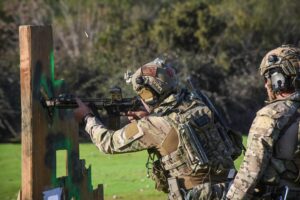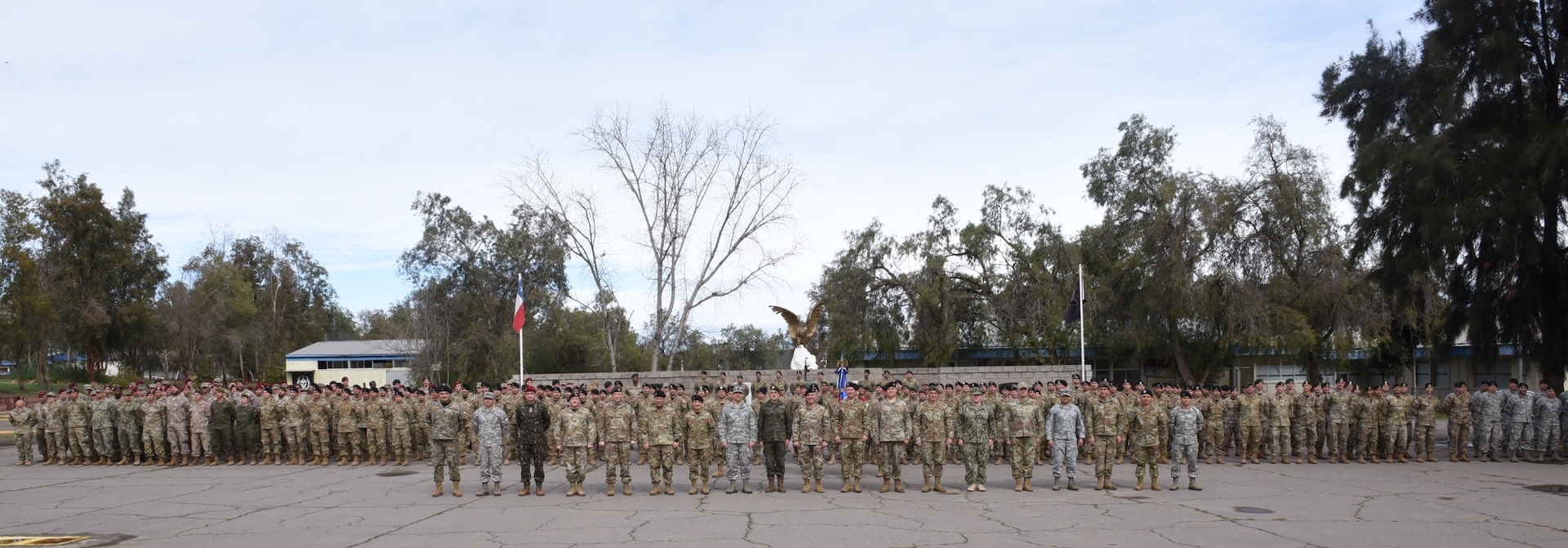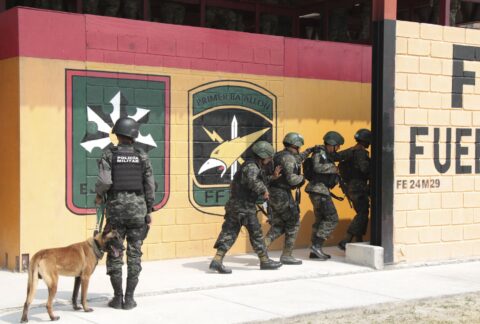A 3,700-kilometer area of operations, covering almost all of Chile’s territory, from the Atacama Desert to the southern pampas, was the backdrop for joint-combined exercise Southern Star 2023.
The training brought together the Chilean Army, Navy, and Air Force (FACH); U.S. Special Operations Command South (SOCSOUTH), a component of U.S. Southern Command (SOUTHCOM); and the Spanish Joint Special Operations Command.
“The result is absolutely positive, as we deployed and applied our training and also developed new capabilities,” Lieutenant Colonel Davor Versalovic, of the Chilean Army’s Special Operations Command (COPE) and head of the planning team for Chile for Southern Star 2023, told Diálogo on September 16. “The main thing is that from now on we are more interoperable, more joint, strengthening our professional ties with partner countries.”
This July 24-August 11 edition of Southern Star, which dates back to 2007, had the participation of more than 1,700 military personnel, making it the largest of its kind in Latin America, the Chilean Army said.
The exercise brought together land, maritime, and air assets to strengthen readiness and interoperability, coordination, and special operations among its military forces to face regional challenges. During the 18 days of training, participating special forces deployed across Chile from Antofagasta, in the north, to Punta Arenas, in the extreme south.
The exercise was conducted within the framework of a fictitious United Nations (U.N.) peace and law enforcement scenario.

Among the highlights of the exercise was the participation of the U.S. Air Force AC-130J Ghostrider attack aircraft. Special forces practiced joint procedures, putting into practice tactics to request close air support fire from the AC-130Js, Argentine platform Zona Militar reported. They also performed free jump and fast rope insertion maneuvers from SH-32 Cougar helicopters.
The Chilean Navy participated with the oil tankers Araucano and Almirante Montt, the Naval Aviation, the Expeditionary Amphibious Brigade, and the Special Forces Command. The latter conducted aerial, terrestrial, and aquatic insertions, the Chilean Army said via Facebook.
Meanwhile, the FACH showed up with Special Forces tactical units, made up of Aviation Commandos, in addition to MLU and Block 50 F-16, A-29 Super Tucano, and F-5 Tigre III fighter jets; Bell-412 and MH-60M Black Hawk helicopters; C-130 Hercules, Boeing KC-135 Stratotanker and CASA 212 transport aircraft.
They also used Boeing E-3D Sentry aircraft with AWACS Airborne Early Warning and Control System, the FACH said. The institution also provided logistics and operational support and was responsible for the transfer of cargo, equipment, and personnel, in addition to other tasks such as ground refueling.
“One thing that stands out about our U.S. partners is their commitment to achieving the best possible standards in terms of training,” said Lt. Col. Versalovic. “It also highlights the wealth of experience they have to share with us, which they have accumulated throughout their history.”
“[In the future] we hope to work together integrating aviation, ground forces, and special forces in different scenarios; whether it be in the desert, in the mountains, or the more extreme areas in southern Chile,” said U.S. Marine Corps Brigadier General Peter Huntley, commander of SOCSOUTH. “We hope in the future to have more countries in the exercise.”
Chile and the United States are already preparing Southern Star 2025, which will resume its execution in odd-numbered years, as it did prior to the COVID-19 pandemic.









